Timeless: Dance load for performers and spectators
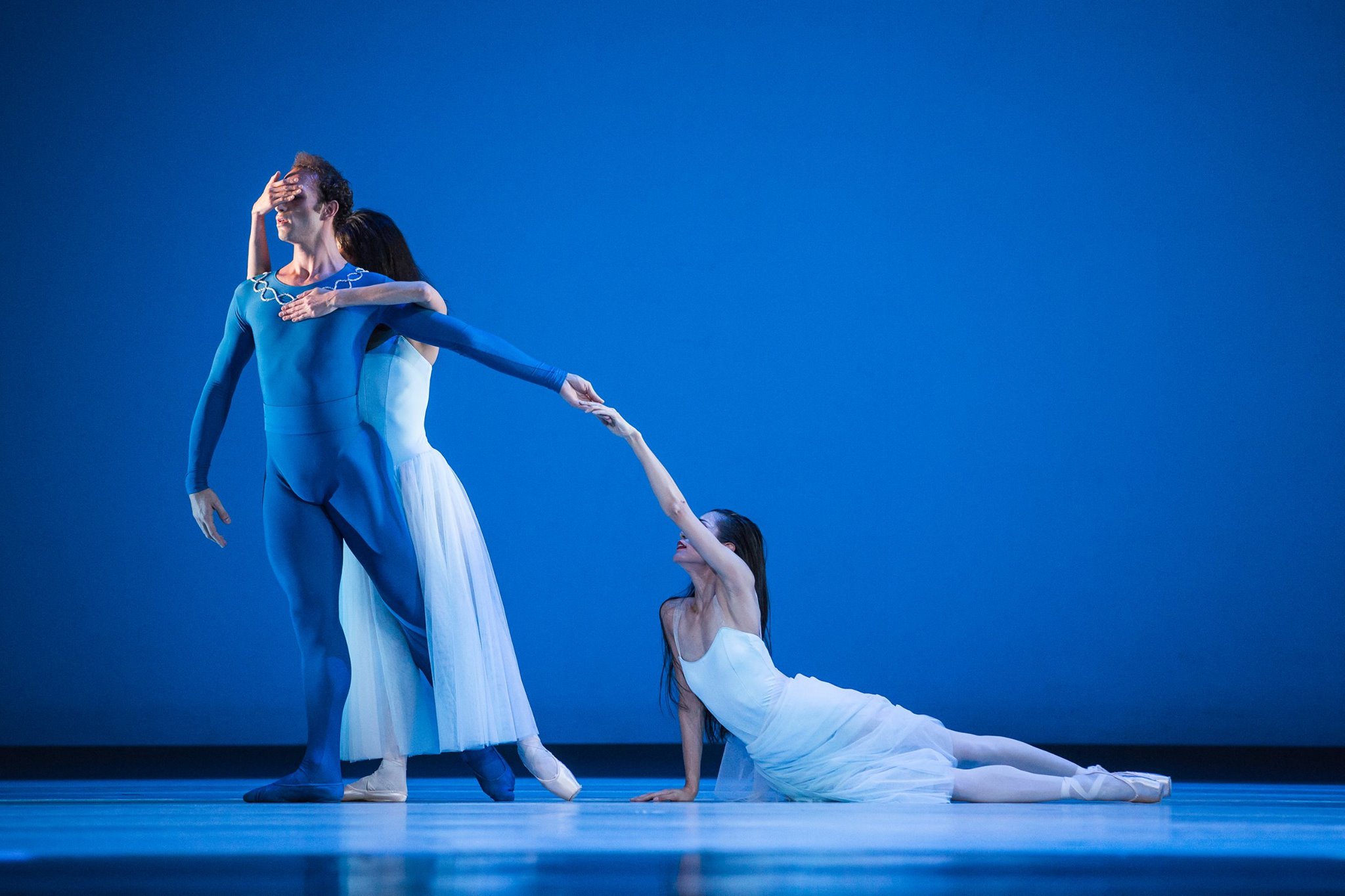 In English, “timeless” means never changing in time, and so the title of the new premiere of the National Theatre ballet company, under the direction of Filip Barankiewicz, brings a lot of admiration for the choreographic jewels of the past that will surely outlive us all. The bill consists of three pieces – the first one is George Balanchine’s legendary Serenade with the music score by Piotr Ilyich Tchaikovsky (Serenade for Strings in C), presented for the first time in Prague; the second one is Rite of Spring (composed by Igor Stravinsky) choreographed by a great American author Glen Tetley and never staged in our country before. This excursion into the past is interrupted by a brand-new composition Separate Knots by the contemporary Israeli creator Emanuel Gat who has been based in France for more than 10 years. His choreography astonishes with original dance vocabulary and unorthodox method of creation and staging. Under the direction of Petr Zuska, similar mixed bills entitled Americana were regularly included in the dramaturgy of the National Theatre ballet company and so some pieces by Balanchine, Tetley, as well as Ailey, Limón and Forsythe have already appeared on our first stage.
Noble homage to the master
The life and work of George Balanchine follows an incredible path and it is of immense importance for the perception and existence of the 20th century dance. Mister B, as he is often called (his original name is Giorgi Melitonovich Balanchivadze) graduated from the Imperial Ballet School in St Petersburg, later he danced in Sergei Diaghilev’s company Ballets Russes.
Serenade was created in 1935, shortly after Balanchine founded the School of American Ballet (1934). However, the author revised his work several times, for the last time in 1975. How many changes, geometrical shifts and twists and strange “drapery” happen and evolve in space is hard to say. The choreography (its original version) is dominated by seventeen female dancers. The romantic opening scene is all in bright blue, without scenography, just empty space and sun-blinded girls covering their faces. Suddenly one of them breaks the still, static picture and starts to dance. From that moment on, one dance passage follows another – a stream of fragile group scenes and little solos, very accurately and precisely executed. The solo parts of three girls – the Waltz Girl (Aya Watanabe), the Russian Girl (Alina Nanu) and the Dark Angel (Miho Ogimoto) and the delicate dance of ballerinas are disturbed by two male solos – the Waltz Boy (Dmytro Tenytskyy) and the Elegy Boy (Giovanni Rotolo).
In English, “timeless” means never changing in time, and so the title of the new premiere of the National Theatre ballet company, under the direction of Filip Barankiewicz, brings a lot of admiration for the choreographic jewels of the past that will surely outlive us all. The bill consists of three pieces – the first one is George Balanchine’s legendary Serenade with the music score by Piotr Ilyich Tchaikovsky (Serenade for Strings in C), presented for the first time in Prague; the second one is Rite of Spring (composed by Igor Stravinsky) choreographed by a great American author Glen Tetley and never staged in our country before. This excursion into the past is interrupted by a brand-new composition Separate Knots by the contemporary Israeli creator Emanuel Gat who has been based in France for more than 10 years. His choreography astonishes with original dance vocabulary and unorthodox method of creation and staging. Under the direction of Petr Zuska, similar mixed bills entitled Americana were regularly included in the dramaturgy of the National Theatre ballet company and so some pieces by Balanchine, Tetley, as well as Ailey, Limón and Forsythe have already appeared on our first stage.
Noble homage to the master
The life and work of George Balanchine follows an incredible path and it is of immense importance for the perception and existence of the 20th century dance. Mister B, as he is often called (his original name is Giorgi Melitonovich Balanchivadze) graduated from the Imperial Ballet School in St Petersburg, later he danced in Sergei Diaghilev’s company Ballets Russes.
Serenade was created in 1935, shortly after Balanchine founded the School of American Ballet (1934). However, the author revised his work several times, for the last time in 1975. How many changes, geometrical shifts and twists and strange “drapery” happen and evolve in space is hard to say. The choreography (its original version) is dominated by seventeen female dancers. The romantic opening scene is all in bright blue, without scenography, just empty space and sun-blinded girls covering their faces. Suddenly one of them breaks the still, static picture and starts to dance. From that moment on, one dance passage follows another – a stream of fragile group scenes and little solos, very accurately and precisely executed. The solo parts of three girls – the Waltz Girl (Aya Watanabe), the Russian Girl (Alina Nanu) and the Dark Angel (Miho Ogimoto) and the delicate dance of ballerinas are disturbed by two male solos – the Waltz Boy (Dmytro Tenytskyy) and the Elegy Boy (Giovanni Rotolo).
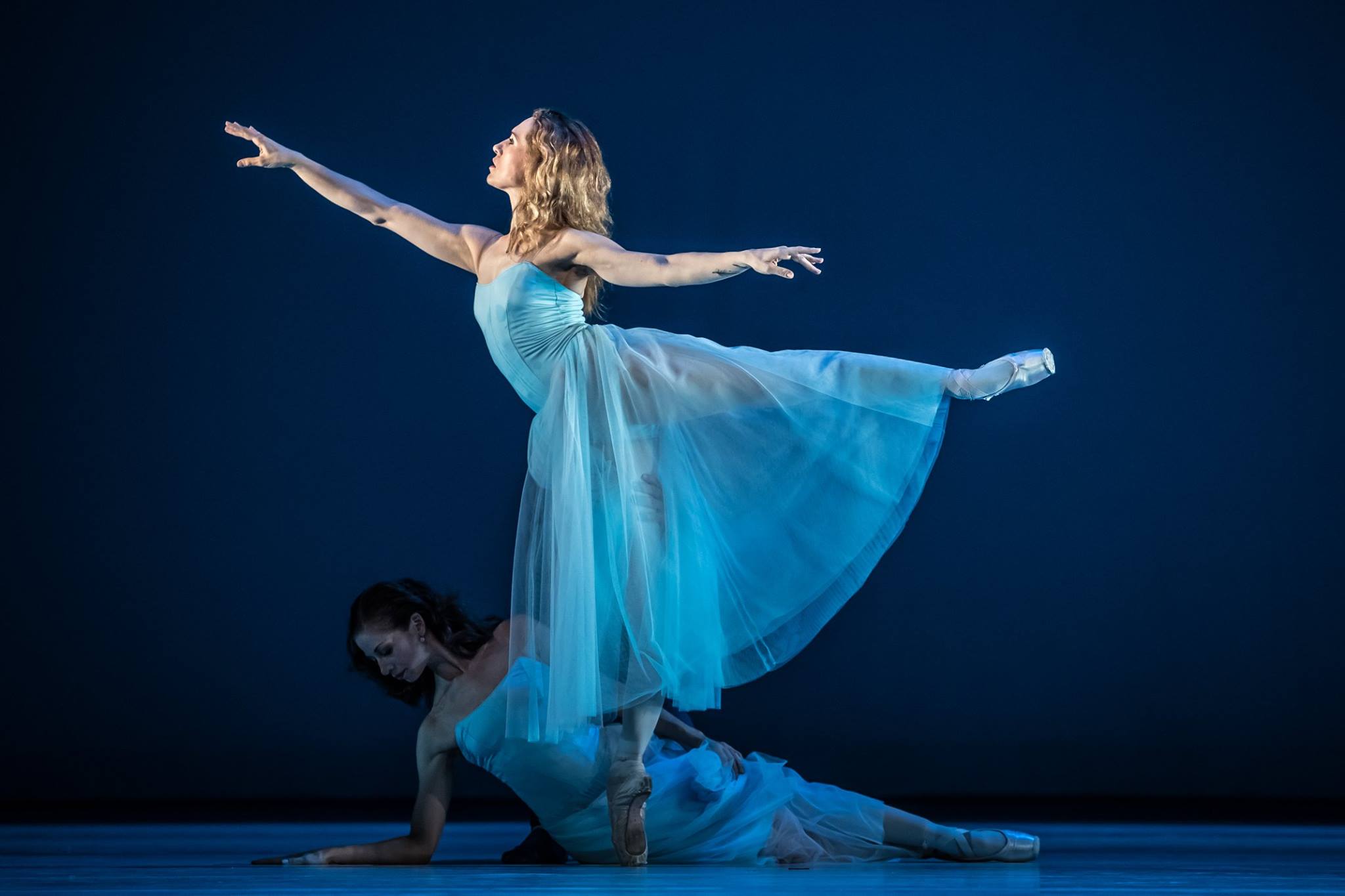 Composition-wise, Balanchine returns to the opening scene, but when it all seems to culminate and finish, there comes an even more dramatic situation, when the solo dancers let their hair loose and dance with freedom and ecstasy, but in much sadder tone. In the end, one of the girls is carried away on men’s shoulders, as if leaving into another world, another dimension. Of course, this cannot be seen as a narrative but rather as symbolism – first, the symbol of joy and then of symbol of leaving or death.
Balanchine’s neoclassic style is defined by accuracy of movement and fast footwork, brisk variations of steps on point, naturally. The port de bras, on the contrary, should be soft and supple, contrasting with the sharp footwork. All soloists gave were very precise performances, though it seems that the second cast including Sophie Benoit, Nikola Márová and Andrea Kramešová with their partners Michal Štípa and Adam Zvonař – got even closer to Balanchine’s soft, refined and noble style. However, the State Opera Orchestra could have played Tchaikovsky’s Serenade more accurately and in tune. Although it is great to have a whole evening accompanied by live music!
Different every time
The only living choreographer featured in the first ballet premiere of this season is the Israeli choreographer Emanuel Gat. Since 2007 he’s been living in Istres, France, where he started to work in Maison de la Danse Intercommunale with his own company of ten dancers – Emanuel Gat Danse – and he is connected with the international festival Montpellier Danse, where he has presented many of his productions. Most of them are very dynamic, utilising intricate music scores (the interview on Separate Knots is to be found here).
Interestingly, Gat decided to bring to Prague a duet, though having a large ensemble at his disposal. After the casting, the dance couples were jumbled together in different ways. Just one couple, the premiere cast Morgane Lanoue and Federico Ievoli, remained mixed. The second cast involves two men Štěpán Pechar and Ondřej Vinklát and the third cast brought together two experienced ballerinas Kristina Kornová and Kristýna Němečková. This diversity does not harm the piece at all. But the choreography itself seems a bit insecure, as if incomplete. The rawness of the dance is underlined by the choice of costume – black briefs for men and light white underwear for women. The way of choreographing Gat has chosen is new and unconventional to some extent. From the first rehearsals the choreographer and his assistants transmitted solid movement material that the dancers surely integrated very fast. However, the dancers work with movement passages and phases independently of the original choreography, like, for example, African musicians who give a call for rhythmical or dynamic change. And so all the three gender-mixed couples improvise a little, they decide when and where to perform the fragments of choreographic patterns with somewhat intimate partnering and lifts, weight shifts and contact. Every performance can thus be very different due to the method of action and reaction.
Composition-wise, Balanchine returns to the opening scene, but when it all seems to culminate and finish, there comes an even more dramatic situation, when the solo dancers let their hair loose and dance with freedom and ecstasy, but in much sadder tone. In the end, one of the girls is carried away on men’s shoulders, as if leaving into another world, another dimension. Of course, this cannot be seen as a narrative but rather as symbolism – first, the symbol of joy and then of symbol of leaving or death.
Balanchine’s neoclassic style is defined by accuracy of movement and fast footwork, brisk variations of steps on point, naturally. The port de bras, on the contrary, should be soft and supple, contrasting with the sharp footwork. All soloists gave were very precise performances, though it seems that the second cast including Sophie Benoit, Nikola Márová and Andrea Kramešová with their partners Michal Štípa and Adam Zvonař – got even closer to Balanchine’s soft, refined and noble style. However, the State Opera Orchestra could have played Tchaikovsky’s Serenade more accurately and in tune. Although it is great to have a whole evening accompanied by live music!
Different every time
The only living choreographer featured in the first ballet premiere of this season is the Israeli choreographer Emanuel Gat. Since 2007 he’s been living in Istres, France, where he started to work in Maison de la Danse Intercommunale with his own company of ten dancers – Emanuel Gat Danse – and he is connected with the international festival Montpellier Danse, where he has presented many of his productions. Most of them are very dynamic, utilising intricate music scores (the interview on Separate Knots is to be found here).
Interestingly, Gat decided to bring to Prague a duet, though having a large ensemble at his disposal. After the casting, the dance couples were jumbled together in different ways. Just one couple, the premiere cast Morgane Lanoue and Federico Ievoli, remained mixed. The second cast involves two men Štěpán Pechar and Ondřej Vinklát and the third cast brought together two experienced ballerinas Kristina Kornová and Kristýna Němečková. This diversity does not harm the piece at all. But the choreography itself seems a bit insecure, as if incomplete. The rawness of the dance is underlined by the choice of costume – black briefs for men and light white underwear for women. The way of choreographing Gat has chosen is new and unconventional to some extent. From the first rehearsals the choreographer and his assistants transmitted solid movement material that the dancers surely integrated very fast. However, the dancers work with movement passages and phases independently of the original choreography, like, for example, African musicians who give a call for rhythmical or dynamic change. And so all the three gender-mixed couples improvise a little, they decide when and where to perform the fragments of choreographic patterns with somewhat intimate partnering and lifts, weight shifts and contact. Every performance can thus be very different due to the method of action and reaction.
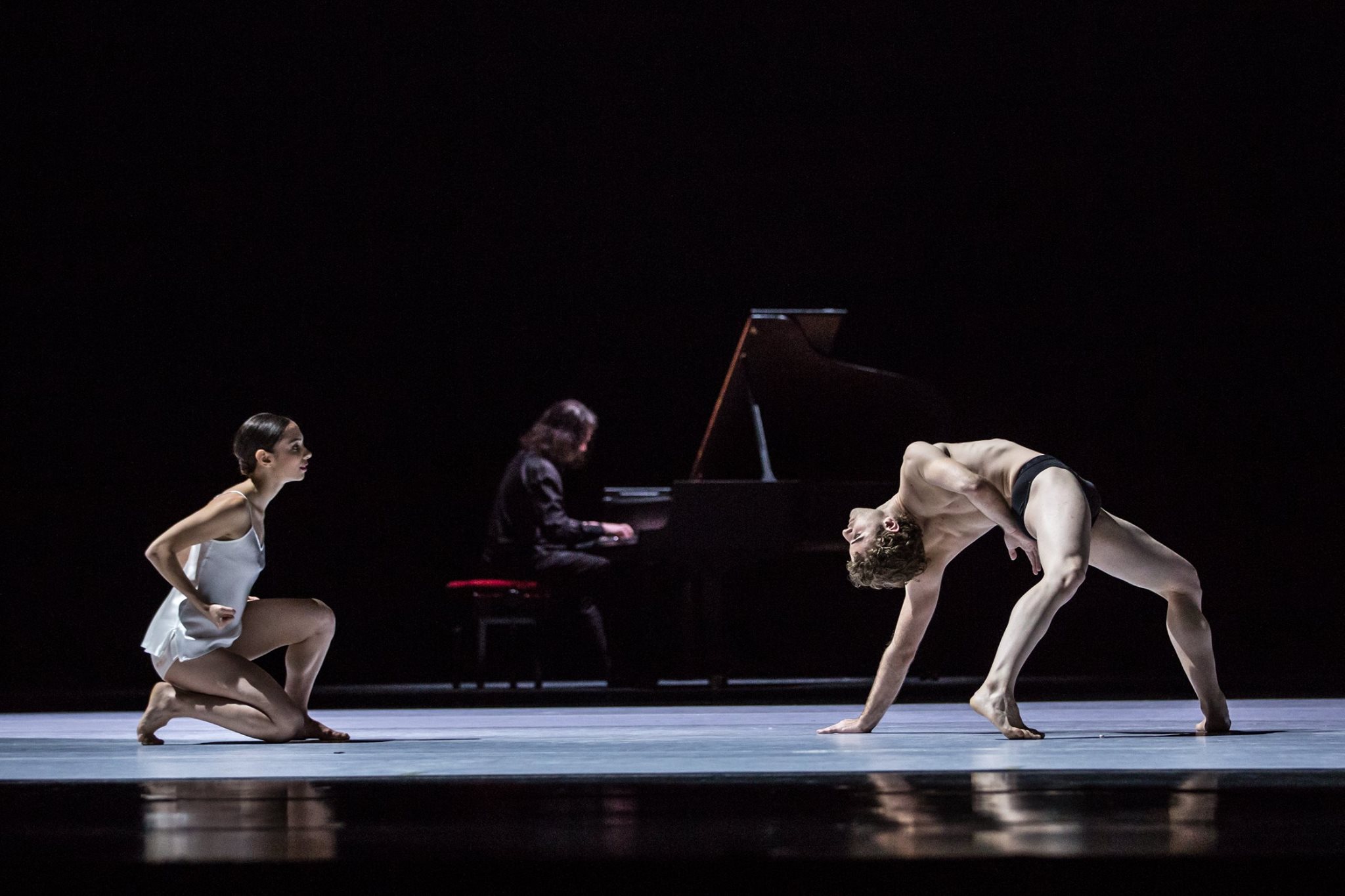 The stage is empty, only a piano standing upstage and virtuoso pianists Martin Levický or Marcel Javorček accompanying the dancers. Both of the pianists play very well, still Martin Levický seems to be more familiar with the music - it is Sonata No. 3 in B minor, Op. 58, more precisely its two parts Allegro maestoso and Finale, Presto, ma non tanto, agitato. It is questionable how much the dance couples really listen to the music, as it serves more as a decoration or addition to the movement, the choreography is actually rather detached from the music score.
The stage is empty, only a piano standing upstage and virtuoso pianists Martin Levický or Marcel Javorček accompanying the dancers. Both of the pianists play very well, still Martin Levický seems to be more familiar with the music - it is Sonata No. 3 in B minor, Op. 58, more precisely its two parts Allegro maestoso and Finale, Presto, ma non tanto, agitato. It is questionable how much the dance couples really listen to the music, as it serves more as a decoration or addition to the movement, the choreography is actually rather detached from the music score.
On the edge of physical capacities – Ondřej Vinklát leads the dance The highlight of the evening is surely Sacre du printemps or Rite of Spring by Igor Stravinsky. It is generally known that Stravinsky, unwillingly, brought about the revolution in the world of music and on 29 May 1913 he rewrote the history of artisticconvention with an incredible and unheard-of scandal. The performance of Rite of Spring could not be finished because the spoilt audience, used to Romantic and classicist music aesthetics of the Paris’s Théâtre des Champs Elysées, could not endure the dramatic, ritualistic, rhythmically frenetic blast of the composition subtitled Pictures of Pagan Russia in Two Parts. They didn’t understand at that moment they were listening to a unique and ingenious piece. The production was ‘re-named’ Massacre du printemps (Killing of Spring). Stravinsky got some satisfaction a year later, when his music was performed in concert in L’Opera de Paris, conducted again by Monteux. The ballet, choreographed by Léonid Massine, was presented again in Théâtre des Champs Elysées (the first choreographer had been Vaslav Nijinsky, who suffered from serious mental illness at the time of the second staging).
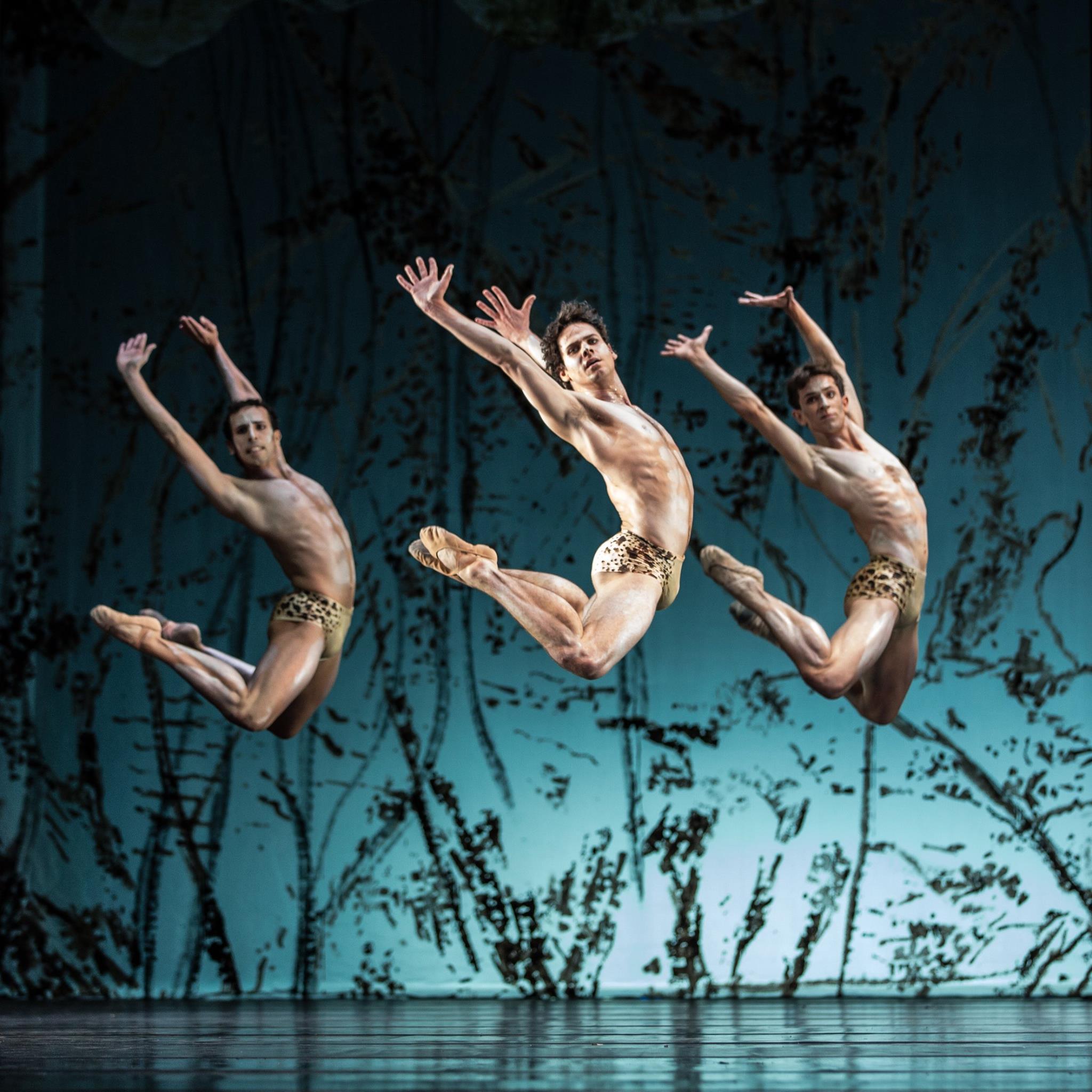 The present premiere in the National Theatre offers a choreographic masterpiece by Glen Tetley from 1974, staged by Bronwen Curry and Alexandra Zaitseva. Glen Tetley also got to dancing rather by chance, when his talent was recognised by the American choreographer Jerome Robbins. Tetley started to study hard – he learned classical dance technique with Antony Tudor and Margaret Craske and modern techniques with Martha Graham and Hanye Holm. His dance background shows in his greatest works and the technique his uses is very challenging. It is in Rite of Spring where the dancers are pushed onto the edge of their physical capacities – in their technique, rotations, jumps and falls, in almost equilibristic partnering. The solo couple – Mother and Father, brilliantly interpreted and acted by Nikola Márová and Michal Štípa (on both premiere nights) – must execute many acrobatic lifts and admirably refined ‘knotted’ positions. Clearly, after many years of dancing together at the professional level, the two dancers are perfectly connected. At the beginning we see the Chosen One (a male dancer in Tetley’s version) who is to be, and will be, sacrificed. In the first cast, Ondřej Vinklát excels with his radiating energy, not mentioning his impeccable technique. It seems like Glen Tetley choreographed the part on him. Forty years after the first premiere of the piece, the character seems fresh and present, as he conveys the futility of any effort, the despair and vulnerability. All the solo parts are full of technical tricks like Graham moves – contractions and spiral rotations, insane jumps and falls - as well as acrobatic features. For example, a group of male dancers catch the Chosen One as he is falling down – seemingly into void and weightlessness!
The second cast dancer Youn Sik Kim also tries hard to show his best, but he is not so strong yet. In the first part of the composition, Tetley worked with intentional multiplying of the number of male dancers, adding three every time, and letting them dance the same passage canonically. He applies the same principle to other group passages. The clarity of choreographic composition becomes exemplary to some extent. The gradation of choreographic plan, its complexity, changes of tempo and dynamics,
The present premiere in the National Theatre offers a choreographic masterpiece by Glen Tetley from 1974, staged by Bronwen Curry and Alexandra Zaitseva. Glen Tetley also got to dancing rather by chance, when his talent was recognised by the American choreographer Jerome Robbins. Tetley started to study hard – he learned classical dance technique with Antony Tudor and Margaret Craske and modern techniques with Martha Graham and Hanye Holm. His dance background shows in his greatest works and the technique his uses is very challenging. It is in Rite of Spring where the dancers are pushed onto the edge of their physical capacities – in their technique, rotations, jumps and falls, in almost equilibristic partnering. The solo couple – Mother and Father, brilliantly interpreted and acted by Nikola Márová and Michal Štípa (on both premiere nights) – must execute many acrobatic lifts and admirably refined ‘knotted’ positions. Clearly, after many years of dancing together at the professional level, the two dancers are perfectly connected. At the beginning we see the Chosen One (a male dancer in Tetley’s version) who is to be, and will be, sacrificed. In the first cast, Ondřej Vinklát excels with his radiating energy, not mentioning his impeccable technique. It seems like Glen Tetley choreographed the part on him. Forty years after the first premiere of the piece, the character seems fresh and present, as he conveys the futility of any effort, the despair and vulnerability. All the solo parts are full of technical tricks like Graham moves – contractions and spiral rotations, insane jumps and falls - as well as acrobatic features. For example, a group of male dancers catch the Chosen One as he is falling down – seemingly into void and weightlessness!
The second cast dancer Youn Sik Kim also tries hard to show his best, but he is not so strong yet. In the first part of the composition, Tetley worked with intentional multiplying of the number of male dancers, adding three every time, and letting them dance the same passage canonically. He applies the same principle to other group passages. The clarity of choreographic composition becomes exemplary to some extent. The gradation of choreographic plan, its complexity, changes of tempo and dynamics,
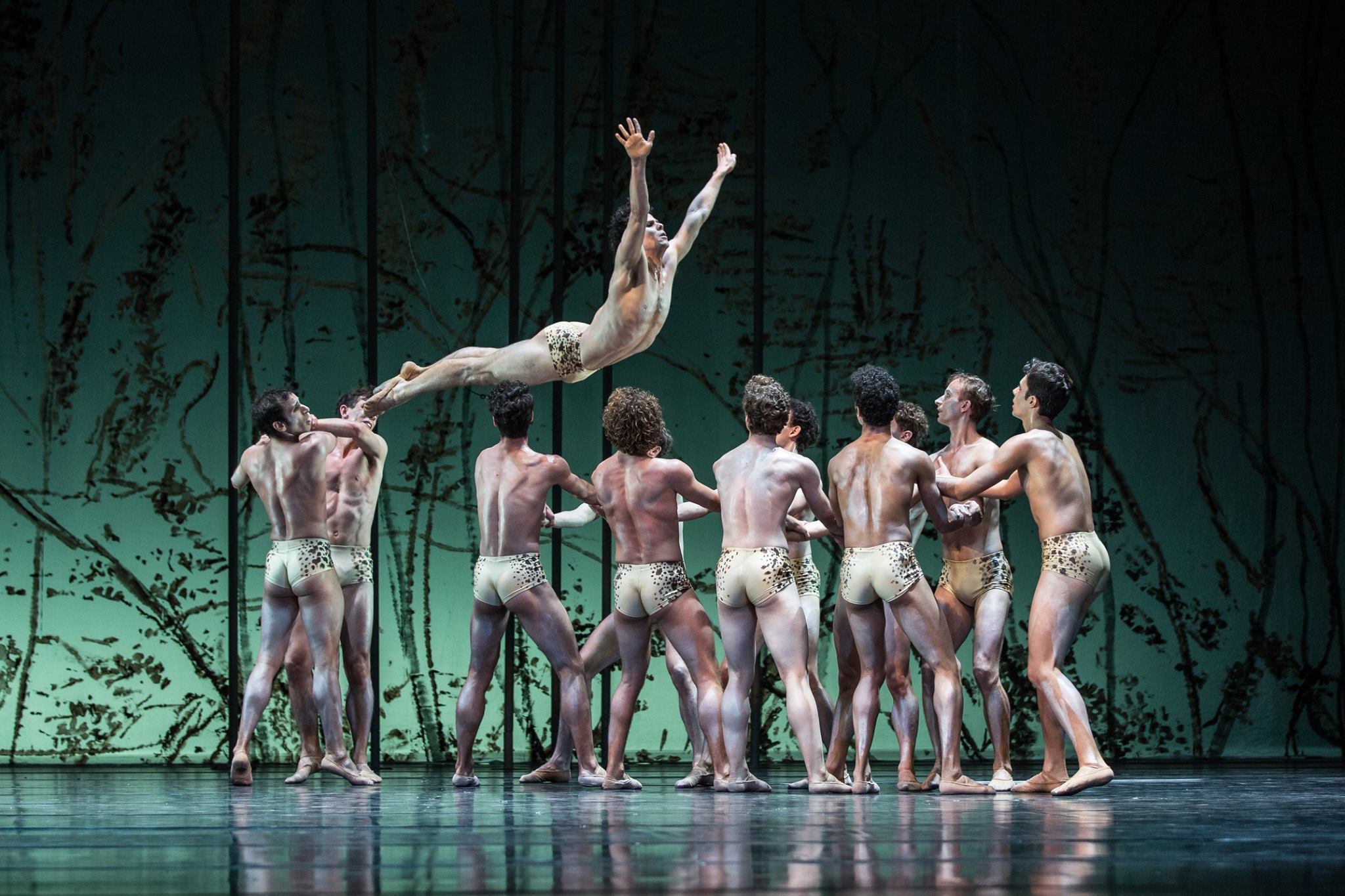 and the work with space are exquisite, not mentioning the perfect harmony with music. The choreography represents a great challenge for the partially renewed ballet company. After the audition, which took place in February this year, the company welcomed fourteen new dancers and was left by some others. Sadly, the professionally structured programme does not give any details about the soloists or newly arrived dancers, just the traditional name lists for each cast. The artists would definitely deserve more attention.
Glen Tetley’s Rite of Spring is a real blast and surprising dance load for the performers and spectators alike.
and the work with space are exquisite, not mentioning the perfect harmony with music. The choreography represents a great challenge for the partially renewed ballet company. After the audition, which took place in February this year, the company welcomed fourteen new dancers and was left by some others. Sadly, the professionally structured programme does not give any details about the soloists or newly arrived dancers, just the traditional name lists for each cast. The artists would definitely deserve more attention.
Glen Tetley’s Rite of Spring is a real blast and surprising dance load for the performers and spectators alike.
Written from the first and second premiere on 20 and 21 October 2017, in the National Theatre, Prague.
Timeless Serenade
Choreographer: George Balanchine
Music by: Piotr Ilyich Tchaikovsky
Music director: David Švec
Conductor: David Švec, Václav Zahradník
Costume designer: Roman Šolc
Lighting designer:Daniel Tesař Separate Knots
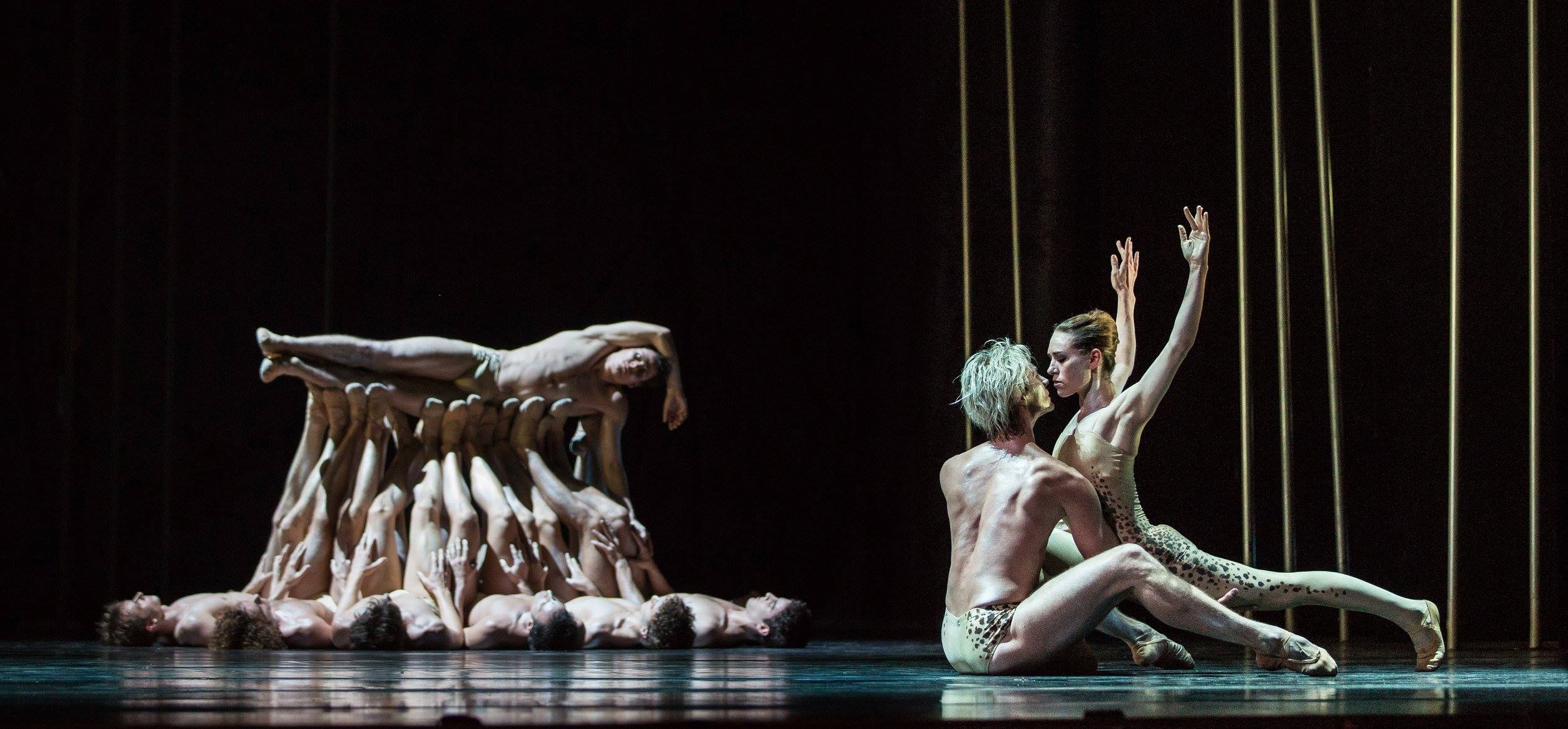
Choreographer: Emanuel Gat
Music by: Frederick Chopin
Costume designer: Emanuel Gat
Lighting designer: Emanuel Gat Rite of Spring
Choreographer: Glen Tetley
Music by: Igor Stravinskij
Music director: David Švec
Conductor: David Švec, Václav Zahradník
Scenography and costume designer: Nadine Baylis
Lighting designer: John B Read First premiere held on 20 October 2017. Second premiere held on 21 October 2017. Translation: Tereza Cigánková


